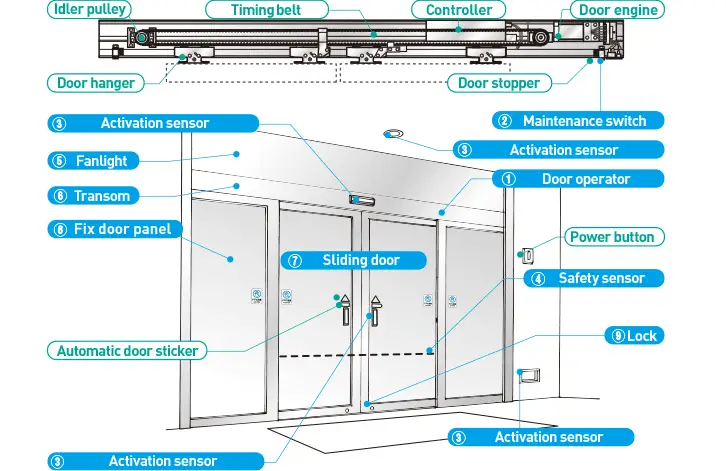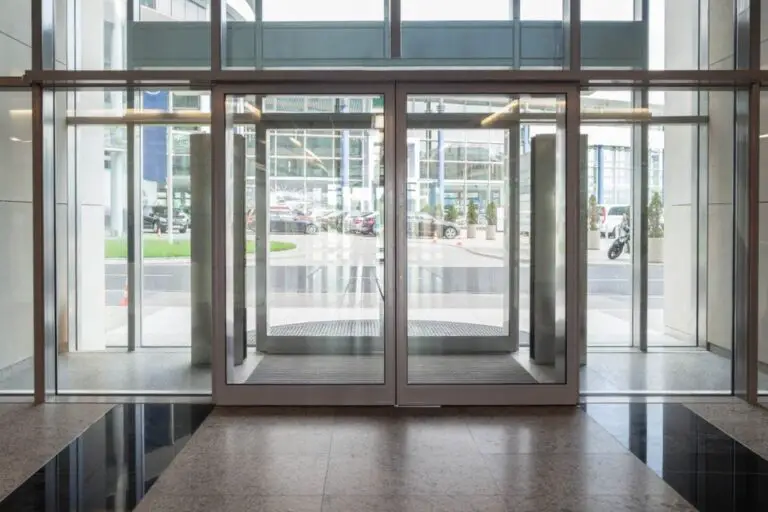Have you ever wondered how an automatic door system works?
Perhaps you love that you no longer have to push a heavy door on your way out and are grateful they exist when you have your children in tow and are carrying so much stuff.
Whether your encounters with automatic doors have been smooth or a little upsetting, it’s hard to imagine going through your busy everyday routine without them. Over time, this technology has gone through several developments to make them more efficient.
That said, let’s find out how automatic doors do their job and allow us to enjoy hands-free entrances and exits.
How does an automatic door system work?
Automatic doors are equipped with a sensor that detects a cue and signals it to move.
Once the system receives the signal, it starts working and opens the door. Sensors come in various types. They can be activated by motion, pressure, or access control systems. When there’s no signal detected in the activation area, the door closes after a certain period.
Aside from the sensors, automatic doors are usually made of door operators, maintenance switches, fanlights, door panels, and door closers or locks.
The door operator is responsible for opening and closing the door. The maintenance switch allows for manual opening and closing for maintenance purposes.
The fanlight is the structure between the ceiling and the door, which can be made from different materials. While the door panel is the door itself, which can consist of fixed and sliding parts.
You can find more information about automatic door closers and related products from suppliers such as Jecom Online Singapore.
Different types of automatic door sensors
- Activation sensors. Activation sensors are a common type of automatic door, and they can also come in different types. For the touch type, you must lightly tap the touch plate to open the door. If it’s beam reflection type, the door shall open when it detects the reflection of the infrared from objects.
- Pressure sensors. Automatic doors can also be activated when they detect pressure in the area. For example, sensors can be installed on pressure mats. When the mats detect weight changes, the door opens. The pressure in the mats signal there’s a person.
- Safety sensors. Sensors can also be installed on doors to provide protection or ensure the safety of users. For instance, the door will stay open until it no longer detects an object or people have already passed through. Or it will stay open while people are still occupying the area.
- Access control sensors. Sensors can also be activated through access control. The automatic doors wait for signals from the access control system for it to open. The signal can come from another device, such as smartphones, that are already programmed to work with the automatic door.
The right type of automatic door system depends on the area where it will be installed and the type of foot traffic.
Sliding doors, such as those you’ll find in trains, are ideal for two-way traffic while swinging doors may be suitable for one-way traffic.
Energy-saving, convenient, and contactless. Regardless of the type you choose, it’s safe to say automatic doors are a life-saver in many ways.
0








